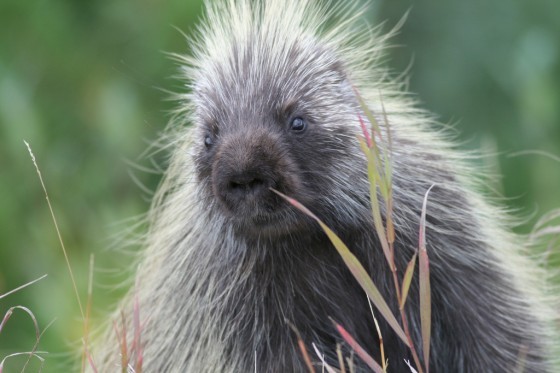Many people are fascinated by porcupines, those unique creatures covered in quills. You might be surprised to learn that, yes, you can have a porcupine for a pet in some situations. The idea of owning such an exotic animal can be intriguing. Perhaps you’ve even heard stories, like the one from a recent staff meeting, about how you can even pet a porcupine without getting hurt if you approach them correctly. But before you rush out to find a pet porcupine, there are many crucial factors to consider. Owning a porcupine is very different from owning a cat or dog, and it requires a deep understanding of their needs and behaviors.
The Appeal of Porcupines as Pets
Why would someone consider a porcupine as a pet? For starters, they are undeniably fascinating animals. Their unique defense mechanism – those thousands of quills – sets them apart from typical domestic pets. Porcupines are also known for being relatively quiet and, in some ways, low-maintenance compared to more demanding pets. Their herbivorous diet can seem simpler than the carnivorous needs of some exotic animals. For those seeking an unusual and conversation-starting pet, a porcupine might initially seem like an interesting option.
Legality and Regulations of Porcupine Ownership
However, the first and most important question is legality. Can you legally own a porcupine in your area? The answer is not straightforward and varies significantly depending on your location. Regulations regarding exotic pet ownership are complex and differ from country to country, state to state, and even city to city. Some areas may completely prohibit porcupine ownership, while others might require permits or have specific restrictions. It’s essential to thoroughly research your local laws and regulations regarding exotic animals before even considering getting a porcupine. Contacting your local animal control, wildlife agencies, or even a lawyer specializing in animal law is crucial to ensure you are compliant with all legal requirements.
Understanding Porcupine Care Needs
If owning a porcupine is legal in your area, the next step is understanding their specific care requirements. These are not domesticated animals like cats or dogs; they have wild instincts and needs that must be met in a captive environment.
Diet and Nutrition for Pet Porcupines
Porcupines are herbivores, and their diet primarily consists of plant-based materials. In captivity, their diet should include a variety of fresh vegetables, fruits, and branches for gnawing. A balanced diet is crucial for their health, and it’s important to research specific dietary recommendations from experienced porcupine keepers or exotic animal veterinarians. Avoid feeding them processed human foods, and ensure they have constant access to fresh, clean water.
Housing and Enrichment for Porcupines
Porcupines need secure and spacious enclosures. They are natural climbers and require a habitat that allows them to exhibit this behavior safely. A large, sturdy cage or outdoor enclosure with climbing structures like branches and platforms is necessary. The enclosure must be predator-proof and escape-proof, as porcupines are adept at escaping poorly constructed habitats. Enrichment is also crucial. Providing them with toys, puzzle feeders, and opportunities to explore and forage will keep them mentally stimulated and prevent boredom.
Temperament, Handling, and Quill Safety
Porcupines are not inherently aggressive animals, but they are also not naturally cuddly pets. As the anecdote mentioned, building trust is key. They can be trained to tolerate handling, but it requires patience and understanding of their behavior. Sudden movements or loud noises can startle them, potentially leading to a defensive quill display.
Petting a porcupine is possible, usually starting from the head and moving downwards in the direction of their quills. However, it’s crucial to understand their body language and respect their boundaries. Quills are a significant consideration. While porcupines cannot “shoot” their quills, they detach easily upon contact. Quills can be painful and difficult to remove, requiring veterinary attention in some cases. Safety precautions must always be taken when handling a porcupine.
Downsides to Consider Before Getting a Porcupine
Despite their unique appeal, there are significant downsides to consider before deciding to keep a porcupine as a pet:
Quill-Related Risks and Safety Concerns
The most obvious concern is the quills. Accidental quill injuries can happen to owners, family members, and other pets in the household. While porcupines don’t intentionally attack, defensive quill deployment can be triggered by stress or fear. Homes with young children or other pets might not be suitable environments for porcupines due to the inherent risks.
Specialized Care and Veterinary Needs
Porcupines are exotic animals, and finding veterinarians experienced in their care can be challenging and potentially expensive. They may require specialized veterinary care for routine check-ups and in case of illness or injury. Their unique physiology and potential health issues require expertise that not all veterinarians possess.
Availability and Ethical Sourcing of Pet Porcupines
Porcupines are not commonly bred as pets, and sourcing them can be difficult. It’s crucial to ensure that any porcupine you consider acquiring is from a reputable breeder or rescue organization, not taken from the wild. Wild-caught animals may be stressed, carry diseases, and be poorly adjusted to captivity. Ethical sourcing is paramount when considering exotic pets.
Final Thoughts on Porcupine Pet Ownership
So, Can You Have A Porcupine For A Pet? Technically, in some places, the answer is yes. However, responsible pet ownership goes far beyond just legality. It involves deeply understanding the animal’s needs, providing proper care, and ensuring your lifestyle and home environment are suitable. Porcupines are fascinating but demanding exotic pets. They require specialized care, secure housing, and a patient owner willing to learn their unique behaviors. Before making a decision, thorough research, legal verification, and honest self-assessment are essential. Just like petting a real porcupine requires trust and a gentle approach, so does responsible porcupine ownership.

